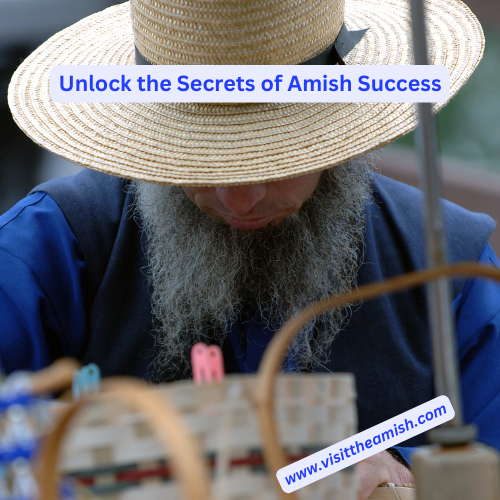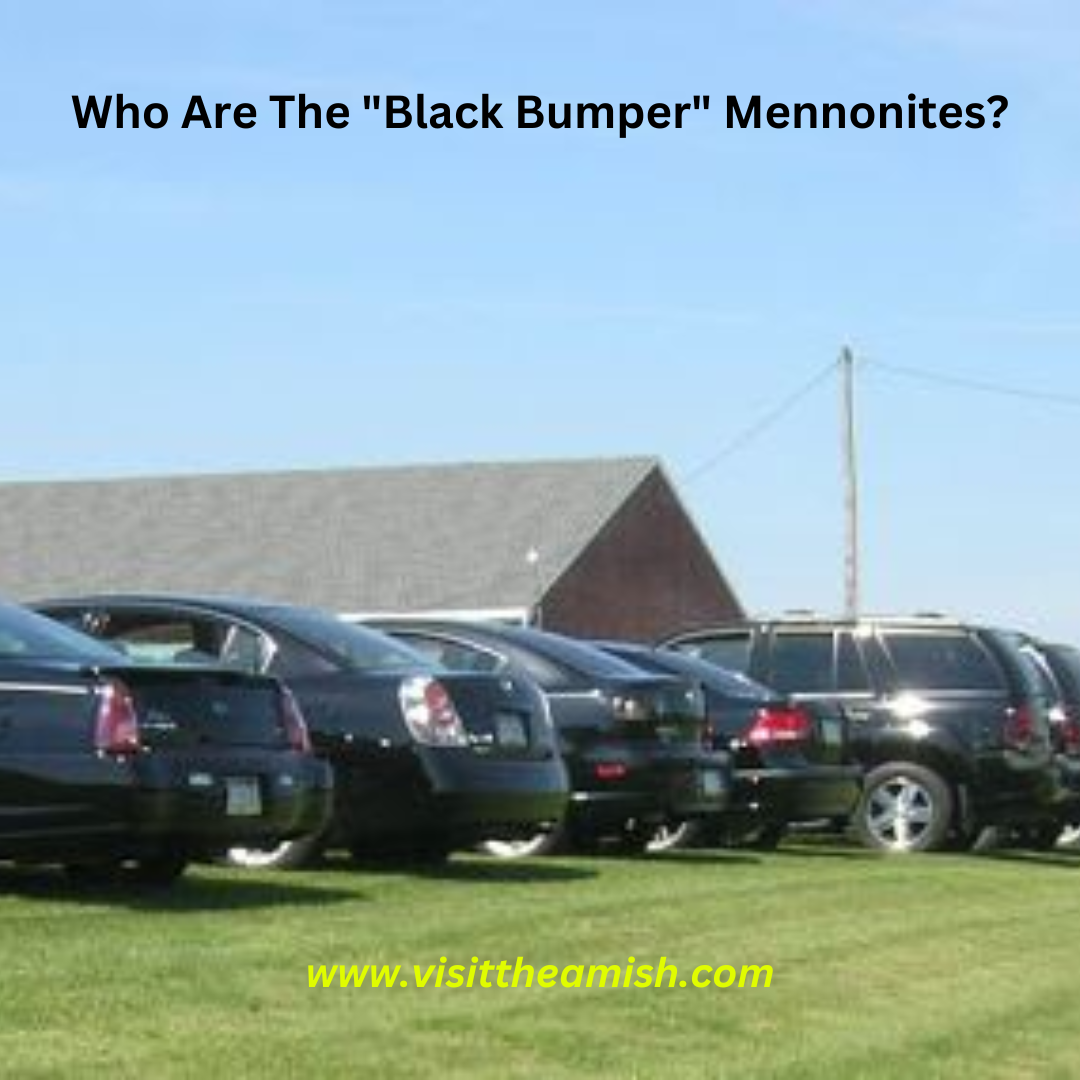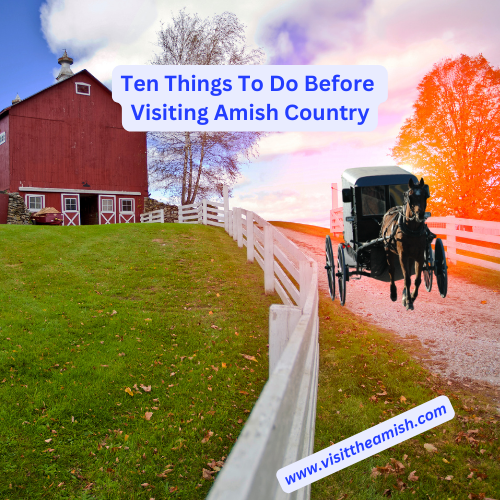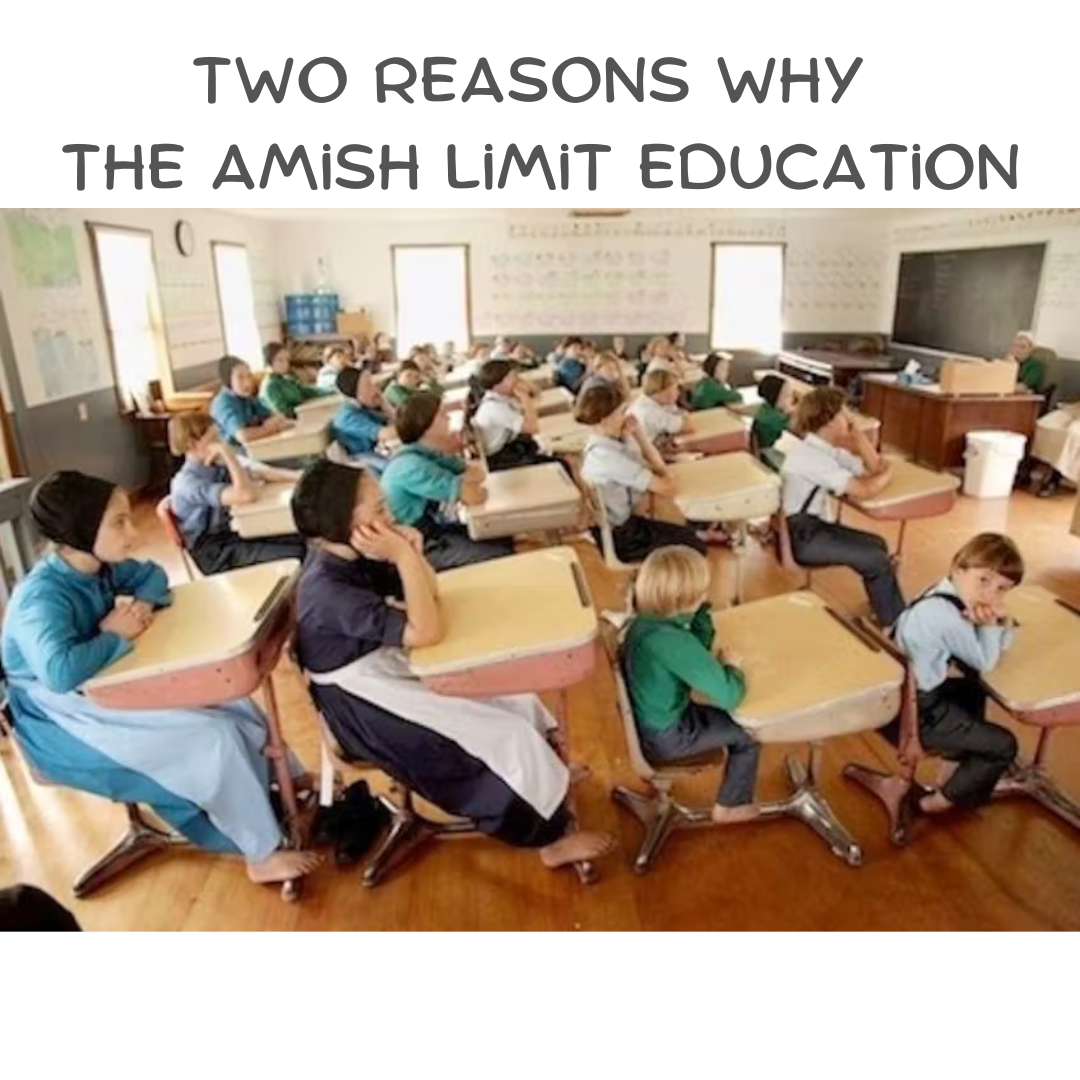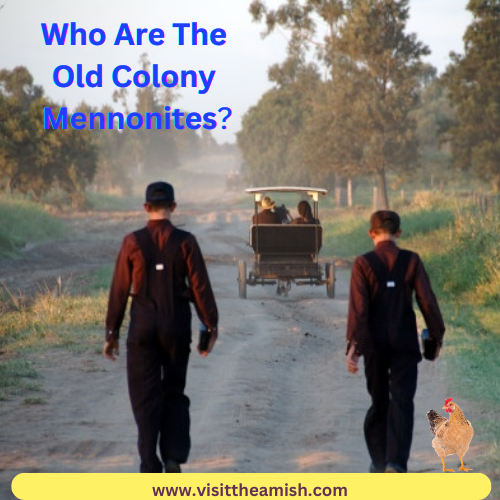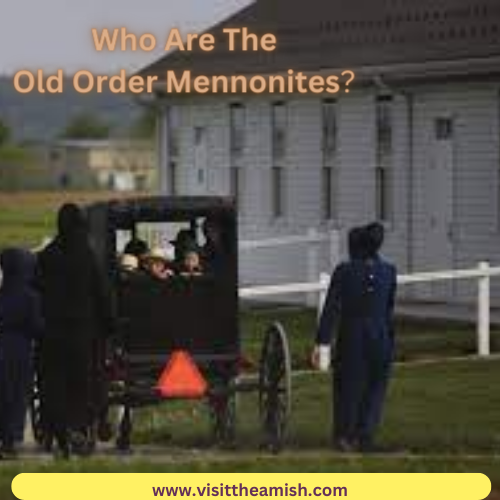The Amish are a religious group known for their traditional way of life and strong sense of community. They value simplicity, humility, and a strong connection to God. One of the key elements of the Amish lifestyle is the emphasis placed on certain virtues, which are considered essential for living a good and moral life.
Respect For Authority
One of the most important virtues among the Amish is respect for authority. The Amish believe that authority is a gift from God and that it is necessary for maintaining order and harmony within the community. Children are taught from a young age to respect their parents and elders, and to obey the rules of the community. This respect for authority extends to all aspects of life, including work, church, and family.
The Amish teach respect for authority through a combination of teachings from the Bible, community customs, and daily interactions. Children are taught to respect their parents, elders, and other leaders within the community. This respect is demonstrated through obedience, deference, and a willingness to submit to the authority figures in their lives.
One example of the Amish demonstrating respect for authority is during the trial of the shooter in the 2006 Amish school shooting. Despite the tragic loss of their loved ones, the Amish community publicly forgave the shooter, Charles Roberts, and offered support to his family. They also reached out to the Roberts family and attended his funeral, demonstrating their belief in the importance of forgiveness and the value of showing compassion even towards those who have caused them harm.
Another example is when an Amish community had to deal with a barn that was destroyed by fire. The community leaders came together and discussed a plan of action to rebuild the barn. The members of the community had to follow the leaders’ instructions, and they worked together to rebuild the barn in a short period of time. This demonstrates how the Amish community follows the authority figures in their community, even in difficult situations.
In addition, Amish children are taught to respect the laws of the land, even if they disagree with them. They do not engage in protests or political activities, they willingly pay taxes and obey the laws of the government, again, demonstrating their respect for authority.
Overall, the Amish view respect for authority as a fundamental virtue that is necessary for maintaining order and harmony within the community. They believe that authority is a gift from God and that it is necessary for living a good and moral life.

Hard Work & Diligence
Hard work and diligence are also highly valued among the Amish. The Amish believe that work is a gift from God and that it is a means of glorifying Him. They place a strong emphasis on manual labor and self-sufficiency, and believe that through hard work and perseverance, one can achieve great things.
The Amish value hard work and diligence as important virtues that are necessary for leading a fulfilling and productive life. From a young age, Amish children are taught the importance of hard work and are expected to contribute to the community through their labor. This includes participating in farming, construction, and other manual labor tasks.
One example of how the Amish families manage their farms. They work hard to take care of their land, animals, and crops, often from dawn to dusk, and they take pride in the fruits of their labor. They practice traditional farming methods, such as using horse-drawn plows and hand tools, which require a significant amount of physical labor.
In addition, the Amish value honesty and integrity, which is demonstrated through their work ethic. They are committed to doing the best job possible, even if it means putting in extra effort, and they take pride in their work. They believe that hard work and diligence are not only necessary for their livelihood but also for their spiritual growth.
Overall, the Amish view hard work and diligence as virtues that are essential for leading a fulfilling and meaningful life. They believe that through hard work and diligence, one can achieve a sense of purpose and contribute to the well-being of the community.
Honesty & Integrity
Honesty and integrity are also important virtues among the Amish. They believe that honesty is the foundation of all relationships and that it is essential for building trust within the community. Children are taught to be truthful and to take responsibility for their actions.
The Amish value honesty and integrity as important virtues that are necessary for living a moral and ethical life. They believe that honesty and integrity are essential for building trust and maintaining relationships within the community. From a young age, Amish children are taught the importance of being truthful and honest in their interactions with others.
One example of the Amish demonstrating honesty and integrity is in their business practices. The Amish are known for their commitment to honesty and integrity in their business dealings. They are known to be fair and honest in their transactions and they keep their promises. They believe that honesty and integrity are essential for building trust with their customers and maintaining a good reputation.
Another example of this virtue is how the Amish take care of their land. They believe in using sustainable farming practices and they make sure that their land is not overworked or overused. They also keep accurate records of their land and animals to ensure that they are not taking more than what is fair. They are known for their commitment to maintaining the integrity of their land and preserving it for future generations.
In addition, the Amish place a strong emphasis on living a simple and modest life, which is reflected in their dress code and the way they live. They believe that living a simple and modest life is an expression of honesty and integrity. They believe that by avoiding the trappings of materialism, they are able to remain true to themselves and their values.
Overall, the Amish view honesty and integrity as essential virtues that are necessary for leading a moral and ethical life. They believe that by being truthful and honest in their interactions with others, they can build trust and maintain strong relationships within the community.
Self-reliance & Self-control

Self-reliance and self-control are also important virtues among the Amish. They believe that it is important to be able to take care of oneself and to make good decisions. Children are taught to be independent and to take responsibility for their own actions.
The Amish value self-reliance and self-control as important virtues that are necessary for leading a responsible and disciplined life. They believe that by being self-reliant and able to control one’s emotions, one can make better decisions and navigate life’s challenges. From a young age, Amish children are taught the importance of being independent and responsible for their actions.
One example of the Amish demonstrating self-reliance and self-control is in their approach to problem-solving. The Amish have a strong sense of community and they rely on one another for support and guidance. However, they also believe in being self-reliant and solving problems on their own. They are taught to think critically and to be resourceful in finding solutions to problems.
Overall, the Amish view self-reliance and self-control as important virtues that are necessary for leading a responsible and disciplined life. They believe that by being self-reliant and able to control one’s emotions, one can make better decisions and navigate life’s challenges.
Humility & Modesty
Humility and modesty are also important virtues among the Amish. They believe that humility is the key to a good and meaningful life. Children are taught to be humble and to put the needs of others before their own.
Humility and modesty are central values in the Amish community. These values are taught through the community’s religious beliefs, practices, and way of life.
One example of how the Amish teach humility and modesty is through their practice of “plain dress.” This means that the Amish dress in a simple and unadorned manner, avoiding flashy or trendy clothing. This practice is meant to promote humility by discouraging vanity and pride in one’s appearance.
Another way the Amish demonstrate humility is through their practice of nonresistance, meaning they avoid physical confrontation and do not believe in violence. This is believed to promote humility by avoiding the pursuit of power and dominance over others.
Compassion & Charity

Compassion and charity are also important virtues among the Amish. They believe that it is important to be kind and compassionate to others, and to help those in need. Children are taught to be generous and to share with others.
The Amish teach compassion and charity through their religious beliefs and practices. They believe in living a simple and humble life, helping those in need, and treating others with kindness and respect.
The Amish belief in compassion and charity is rooted in the teachings of Jesus Christ, and they put these values into practice by helping those in need, being kind and respectful to others, and striving to live a simple and humble life.
Faith & Devotion To God
Faith and devotion to God are also important virtues among the Amish. They believe that faith is the foundation of all things and that it is essential for living a good and moral life. Children are taught to have faith in God and to follow His teachings.
Faith and devotion to God are central values in the Amish community, which are taught and reinforced through the community’s religious beliefs, practices, and way of life.
The Amish have a strong belief in the Bible, and they strive to live their lives according to its teachings. They attend church services every other Sunday, and also have a prayer before and after their meals. They also have a strong emphasis on living a pious life, and they are expected to follow a strict code of conduct, which is meant to reflect their devotion to God.
One specific way the Amish demonstrate faith and devotion to God is through their practice of “nonconformity” which means they avoid the trappings of modern society and strive to live a simple, pious life that is focused on God and community. They believe that by avoiding the materialism and distractions of modern life, they can better focus on their faith and their relationship with God.
Simplicity & Humility
Simplicity and humility are also important virtues among the Amish. They believe that simplicity is the key to a good and meaningful life. Children are taught to be simple and to put the needs of others before their own.
Simplicity and humility are closely related values in the Amish community and they are taught through the community’s religious beliefs, practices, and way of life. The Amish believe that living a simple and humble life is a way to show devotion to God and to avoid the distractions and temptations of the modern world.
One way the Amish teach simplicity is through their practice of “plain dress” which means they dress in a simple and unadorned manner, avoiding flashy or trendy clothing. This practice is meant to promote humility by discouraging vanity and pride in one’s appearance. They also practice simplicity in their daily lives by avoiding the use of modern technology and conveniences, such as electricity and cars, in order to maintain a simple way of life that is focused on God and community.
Simplicity and humility are closely related values in the Amish community, and they are taught and reinforced through the community’s religious beliefs, practices, and way of life. The Amish believe that living a simple and humble life is a way to show devotion to God and to avoid the distractions and temptations of the modern world.
Forgiveness & Patience

Forgiveness and patience are also important virtues among the Amish. They believe that it is important to forgive and to be patient with others. Children are taught to be forgiving and to be patient.
In October 2006, a shooting occurred at an Amish school in the Nickel Mines community of Bart Township, Lancaster County, Pennsylvania. The shooter, Charles Carl Roberts IV, entered the West Nickel Mines School and took hostages, before shooting and killing five schoolgirls aged 6–13 and injuring five others. He then committed suicide. The shooting was widely covered by the media and was met with shock and grief, both locally and nationally. The Amish community responded with forgiveness and compassion towards the shooter and his family, and provided support to the victims and their families. The Amish community also donated money and materials to help rebuild the school, and several families who lost children in the shooting took in children who were orphaned by the tragedy.
Responsibility & Accountability
Responsibility and accountability for one’s actions is also an important virtue among the Amish. They believe that it is important to take responsibility for one’s actions and to be accountable for them. Children are taught to be responsible and to take responsibility for their actions.
Responsibility and accountability are important values in the Amish community, which are taught and reinforced through the community’s religious beliefs, practices, and way of life. The Amish believe that taking responsibility for one’s actions and being accountable to God and to the community is essential to living a virtuous life.
One way the Amish teach responsibility is through their practice of “Ordnung” which is a set of unwritten rules and customs that govern the behavior and conduct of Amish individuals and families. The Ordnung ensures that everyone in the community is held to the same standards and is held accountable for their actions.
Another way the Amish teach responsibility is through their emphasis on hard work and self-sufficiency. The Amish believe that by working hard and being responsible for their own livelihood, they are demonstrating their accountability to God and to the community.
Conclusion
In conclusion, the Amish place a strong emphasis on virtues such as respect for authority, hard work and diligence, honesty and integrity, self-reliance and self-control, humility and modesty, compassion and charity, faith and devotion to God, simplicity and humility, forgiveness and patience, and responsibility and accountability for one’s actions. These virtues are considered essential for living a good and moral life and for maintaining harmony within the community.

